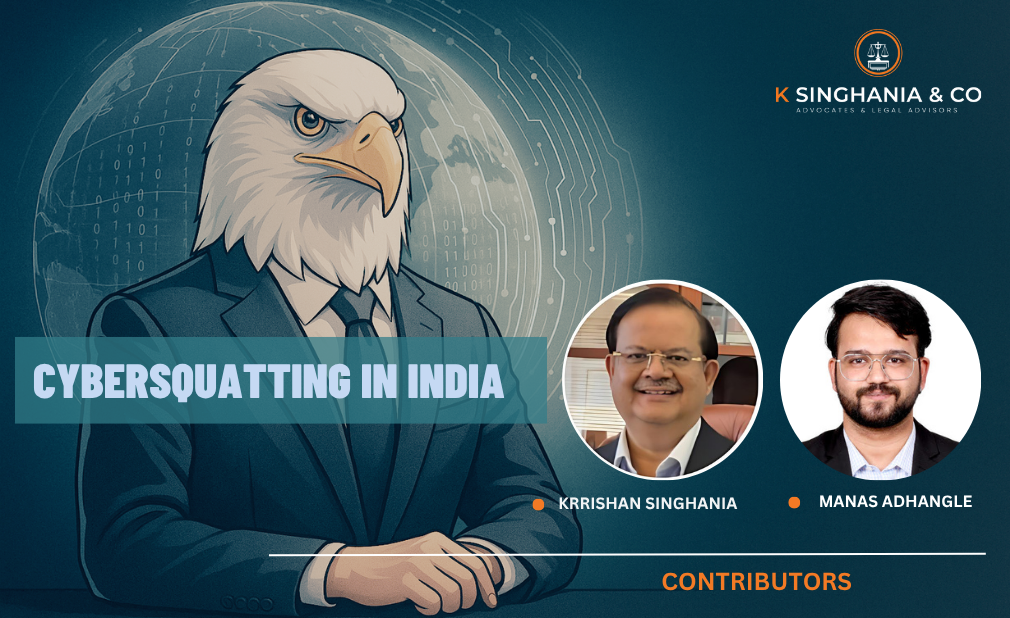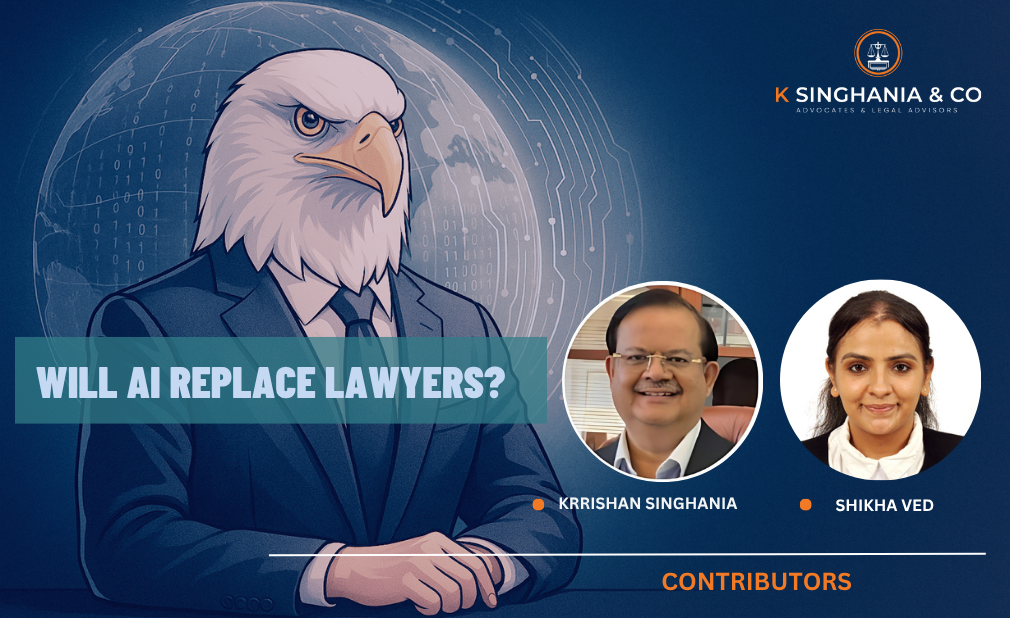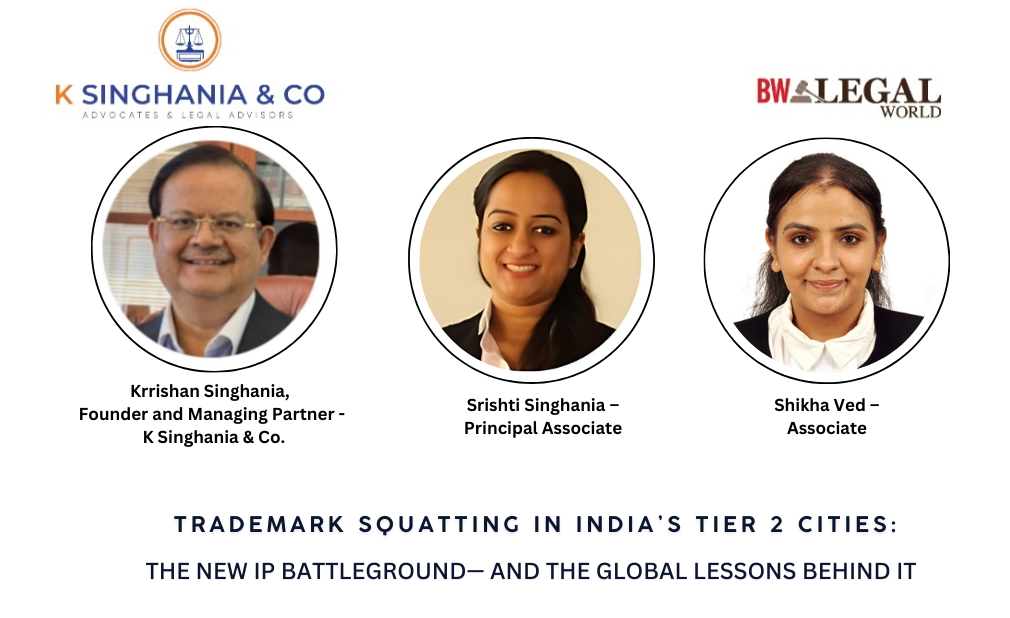In the fast-evolving field of Intellectual Property (IP) law, keeping pace with technological advancements and regulatory reforms is critical for protecting the rights of individuals and businesses alike. This month, we explore three landmark developments that shape the future of IP in India. From the emerging challenges presented by artificial intelligence to significant legislative reforms and influential court rulings, this edition highlights how the legal landscape is adapting to protect creativity, innovation, and brand identity.
THE INTERSECTION OF ARTIFICAL INTELLIGENCE AND INTELLECTUAL PROPERTY RIGHTS
Case: Arijit Singh vs. Codible Ventures LLP
DECRIMINALISATION OF INTELLECTUAL PROPERTY LAWS
Focus: The Jan Vishwas (Amendment of Provision) Act, 2023
PROTECTING BRAND IDENTITY: TRADEMARK RULING IN THE FASHION INDUSTRY
Case: Lacoste vs. Crocodile International
THE INTERSECTION OF ARTIFICAL INTELLIGENCE AND INTELLECTUAL PROPERTY RIGHTS
ARIJIT SINGH VS CODIBLE VENTURES LLP AND ORS.
INTERIM APPLICATION (L) NO.23560 OF 2024 in COM IPR SUIT (L) NO.23443 OF 2024 BOMBAY HIGH COURT
Introduction On July 26, 2024, , Bombay High Court issued a landmark ruling in Arijit Singh v. Codible Ventures LLP, addressing the intersection of artificial intelligence (AI) and intellectual property rights. This case, involving renowned singer Arijit Singh, underscores a pressing issue in digital rights: the unauthorized use of personal attributes, such as voice and likeness, by AI technologies. The Bombay High Court’s order represents a significant advancement in protecting artists’ personality rights in an era where technology can easily replicate and exploit creative works.

Issues Raised
The case centers on the unauthorized commercial exploitation of Arijit Singh’s voice, image, and other personal attributes through AI tools. Arijit Singh sought legal recourse against platforms using AI to clone his voice and likeness without permission. Key concerns include:
- Infringement of Personality Rights: The case questions the extent to which AI platforms can use a celebrity’s attributes without consent and whether such usage constitutes an infringement of personality rights.
- Separation of Legal Concepts: The court’s terminology, distinguishing “personality rights” from “right to publicity,” raises questions about the conceptual overlap and legal definitions of these terms.
- Technological Implications: The rapid advancement of AI technologies presents challenges for existing intellectual property frameworks, necessitating a re-evaluation of how these laws can adapt to technological changes.
These issues highlight the need for robust legal protections against unauthorized exploitation of a celebrity’s persona.
Court’s Observation
A Single Judge Bench, led by Justice R.I. Chagla, assessed the probable harm caused by the illegal production of audio or video content using the Plaintiff’s name, voice, picture, or likeness, particularly in terms of his profession and livelihood. In an ex-parte order, the Court concluded that the Plaintiff had shown a prima facie case for a temporary injunction to prevent the abuse of his personality rights.
The Court acknowledged the plaintiff’s enormous reputation and celebrity status in India, ruling that celebrities have the right to safeguard their image from improper commercial exploitation. This protection includes publicity rights, which prevent illegal commercial use of an individual’s image, as well as concerns about dilution and damage to reputation. Furthermore, any illegal edits, deletions, or distributions of the Plaintiff’s performances or recordings that could harm his reputation would infringe on his moral rights in those performances.
Citing precedents such as Karan Johar v. Indian Pride Advisory Pvt. Ltd.[1], wherein the Bombay High Court emphasized that the unlawful use of a celebrity’s name or persona violates their personality rights. The Court also cited Anil Kapoor v. Simply Life India[2], which confirmed that the Plaintiff’s personality traits are protected under publicity rights. In this case, it was observed that the defendants have illegally utilized the Plaintiff’s characteristics to their gains. The Court expressed concerns over AI technologies that allow unlawful duplication of a celebrity’s voice that such technologies could jeopardize their capacity to govern and preserve their identity.
As a result, the Bombay High Court ordered an ad-interim injunction, which, while temporary, might function as a dynamic injunction. This judgment forbids the Defendants from utilizing the Plaintiff’s characteristics—including his name, voice, vocal style, way of singing, picture, signature, and persona—for commercial or personal advantage without his specific authorization.
Analysis
The Bombay High Court’s decision emphasizes the growing importance of personality rights in the digital age. By issuing an ex-parte ad-interim order, the court set significant precedents for protecting artists against unauthorized AI exploitation. The court’s focus on the “shock” caused by the defendants’ actions underscores the vulnerability of celebrities to digital exploitation and the potential harm to their careers.
The injunction covers various media and technological platforms, including advanced AI applications like voice cloning and deepfakes. This comprehensive approach reflects the court’s recognition of the need to address emerging technologies that challenge traditional intellectual property protections.
The ruling primarily involves the principles of personality rights and the right to publicity. Personality rights protect an individual’s personal attributes, such as name, image, and likeness, from unauthorized commercial exploitation. This often overlaps with the right to publicity, which specifically guards against the unauthorized commercial use of one’s persona.
The plaintiff sought court protection for his personality rights, alleging that the defendants were unauthorizedly exploiting his attributes for various activities:
- AI Voice Synthesis: Defendants No. 1 to 8, operating as AI platforms, used algorithms to create audio-visual content mimicking the Plaintiff’s voice, mannerisms, and likeness for commercial gain. They employed Real Voice Cloning (RVC) technology to convert audio files into the Plaintiff’s voice and operated a website, www.jammable.com, allowing users to create songs using his voice without permission.
- False Association Claims: Defendant No. 9, a restaurant/pub, allegedly misused the Plaintiff’s name and image to falsely claim his presence at a music event for profit. Similarly, Defendant No. 37 promoted a virtual music event on the website www.maicity.io, misleading users about the Plaintiff’s involvement.
- Merchandise Sales: Defendants No. 11 to 23 were accused of selling merchandise featuring the Plaintiff’s name, images, and likeness on platforms like Amazon and Flipkart, unauthorizedly capitalizing on his goodwill.
- GIF Creation and Sharing: Defendants No. 24 and 25 allowed the public to create, store, and share GIFs featuring the Plaintiff’s attributes, further exploiting his personality rights.
- Infringing Domain Names: Unknown entities registered domain names, including arijitsingh.com, without the Plaintiff’s consent, infringing on his personality rights. Accessing this domain redirected users to a third-party website, further complicating the infringement.
K S&Co Comments:
The BomHC’s order in Arijit Singh v. Codible Ventures LLP marks a pivotal moment at the intersection of intellectual property law and technological advancement. By addressing the unauthorized use of AI-driven voice cloning, the court establishes a precedent for protecting artists’ personality rights in a rapidly evolving digital landscape. As technology continues to advance, this ruling highlights the necessity for legal frameworks to adapt and safeguard creative professionals against new forms of exploitation. Future cases will likely build on this foundation, further clarifying how intellectual property laws can evolve to address technological innovations and ensure robust protection for artists and their work.
[1] Karan Johar v. India Pride Advisory Pvt. Ltd., Interim Application (L) No.17865 Of 2024 in Com IPR Suit (L) No.17863 Of 2024.
[2] Anil Kapoor v. Simply Life India, CS(COMM) 652/2023 and I.A. 18237/2023-18243/2023
DECRIMINALISATION OF INTELLECTUAL PROPERTY LAWS
INTRODUCTION
The Jan Vishwas (Amendment of Provision) Act, 2023 (the Act) passed by the Indian parliament is a significant move towards enhancing the ease of doing business in India. This legislation marks a pivotal shift in India’s regulatory landscape by decriminalizing minor offences and rationalising penalties across a broad range of laws. The Act amended 183 provisions in 42 Central Acts overseen by 19 different ministries, and addressed various areas including environment, agriculture, media, and trade, paving the way for a more streamlined and efficient governance system.

The Act aims to replace imprisonment with fines for offenses relating to IPR statutes in India and to regularly update these fines to keep them relevant. It also introduces adjudicating officers to handle IP cases, a shift from the previous approach where courts were the only resort in case of any dispute. This change aims to reduce the burden on the courts and ensuring quicker resolution. This approach encourages businesses and individuals to comply with regulations more easily.
It is pertinent to note that the Ministry of Commerce and Industry, Department for Promotion of Industry and Internal Trade has passed a notification which appoints 1st August 2024 as the date when India will implement significant changes to its Intellectual Property Rights (IPR) laws. The Jan Vishwas (Amendment of Provisions) Act, 2023, which facilitates this decriminalisation, aims to enhance the business environment and align India’s IPR framework with global standards.
KEY CHANGES IN IPR LAWS
A) Amendments to the Patents Act, 1970
The amendments to the Patents Act introduce several critical changes designed to bolster the integrity of patent rights:
- False Representation of Patents (Section 120): Previously, falsely claiming that an article was patented could result in a fine of up to ₹1 lakh. The amendment significantly raises this penalty to a maximum of ₹10 lakhs. Additionally, if the false claim persists beyond the first day, a daily fine of ₹1,000 will be imposed
- Providing False Information (Section 122(2)): The prior provision allowed for imprisonment of up to six months for knowingly providing false information in Form 27. Form 27 is a mandatory form that patent holders and licensees in India must file with the Indian Patent Office annually which contains details of how a patented invention is being worked on commercially in India. This has been revised; now, offenders face a financial penalty equal to either 0.5% of their total sales or a maximum fine of ₹5 crores, whichever is lower
- Appeal Against Penalty Order (Section 124B): A new provision allows individuals to appeal penalty decisions within 60 days. Appeals can be accepted after this period with valid reasons. The appellant must be given a chance to be heard, and the appeal must be resolved within 60 days. Non-compliance with adjudicating or appellate orders within 90 days may lead to an additional fine of ₹1 lakh or imprisonment for up to one year, or both.
These modifications not only increase penalties but also clarify the process for adjudication and appeals, thereby enhancing compliance.
B) Amendments to the Trade Marks Act, 1999
Similar changes have been made to the Trade Marks Act:
- Penalty for False Trademark Representation (Section 107(2)): The previous penalty structure included imprisonment for up to three years for falsely representing trademarks. The new amendment eliminates imprisonment and imposes a purely financial penalty—either 0.5% of total sales or a flat sum of ₹5 lakh, whichever is less.
- Information on Imported Goods (Section 140): The amendment mandates that importers or their agents must provide information regarding the imported goods (this may include the details of the goods, quantity, name and address of the importer, country of origin, batch or lot no., etc) within fourteen days. Failure to comply results in a penalty of ₹10,000, enforceable under the Customs Act.
- Miscellaneous Provisions (Section 157): New sub-sections have been added that outline procedures for inquiries and appeals related to penalties under Section 112(A), enhancing clarity in enforcement. Section 112 (A) has been introduced for “Adjudication of penalties’ wherein the Registrar may authorize an officer to be the adjudicating officer for holding an inquiry and imposing penalty under the provisions of the Trade Marks Act.
These changes are aimed at simplifying compliance and enforcement while ensuring that penalties are proportionate and clear.
K S&Co Comments
The recent amendments to key intellectual property laws in India, specifically the Patents Act, 1970, Trade Marks Act, 1999, aim to decriminalise certain offences, enhance enforcement mechanisms and streamline processes. These changes reflect a significant shift towards stricter penalties for violations and clearer procedures for appeals.
The decriminalisation of IPR laws in India, represents a significant shift in policy aimed at creating a more robust environment for protecting the intellectual property of businesses.
The success of these reforms will depend on the effective implementation and consistent enforcement, which will be crucial in realising the intended benefits for the economy and will also encourage foreign direct investment into India.
PROTECTING BRAND IDENTITY: TRADEMARK RULING IN THE FASHION INDUSTRY
Lacoste and Anr. vs. Crocodile International Pte Ltd & Anr. 
CS(COMM) 1550/2016 Justice Sanjeev Narula
FACTS
The legal conflict between Lacoste and Crocodile International began in 2001 when Lacoste took legal action in India to protect its crocodile emblem, which is registered under the Copyright Acts of 1957 and 1994. Lacoste’s aim was to prevent Crocodile International and its Indian affiliate, Crocodile Products Private Limited, from using a logo that closely resembled its own. Despite Lacoste’s claims, the court ruled against them, focusing solely on the issue of trademark infringement.
Lacoste’s attorneys argued that their crocodile logo is a “well-known trademark” under Indian law and that the similarities between the two logos could mislead consumers into believing that Crocodile International’s products were associated with or endorsed by Lacoste. They claimed this confusion could dilute Lacoste’s brand identity and damage its reputation.
Conversely, Crocodile International defended its position by pointing out that both companies had historically operated in various Asian markets under agreements that permitted the use of their respective logos without conflict. They argued that this arrangement should apply to the Indian market as well. Crocodile International also contended that their logo was distinct from Lacoste’s in terms of design, color, and orientation, which they believed mitigated any risk of consumer confusion.
ISSUES
- Whether the Plaintiff is the owner of the copyright in the “Crocodile Device” and if he is the proprietor of the “Crocodile Device” in India by virtue of registration and use ?
- Whether the suit suffers from gross and unexplainable delay and is hit by laches and acquiescence ?
- Whether the first use of “Crocodile Device” by the Defendant violate the Plaintiff’s Copyright and TradeMark rights in India ?
- Whether the first defendant is the prior adopter and user of the Saurian device and the owner of the trade mark rights in the same ?
- Whether the first plaintiff and the first defendant signed and entered into co-existence agreement dated 17th June, 1983 and 22nd August 1985, for the respective authorities and if yes, whether such coexistence extends to India?
RULING
In a decisive judgment, Justice Sanjeev Narula of the Delhi High Court issued a permanent injunction against Crocodile International, prohibiting the company from producing, selling, promoting, or using the disputed trademark in any manner that infringes upon Lacoste’s registered trademarks. Justice Narula highlighted the critical need to safeguard the distinctiveness of well-known brands like Lacoste’s, noting that the similarity between the two logos could mislead consumers and infringe upon Lacoste’s trademark rights.
The court also mandated that Crocodile International account for profits earned from sales of products bearing the contested trademark since August 1998, when these products were introduced in India. The company has been given six weeks to submit the relevant financial documents. To oversee this process, retired judge Amar Nath has been appointed as a local commissioner to examine the records and assess the profits derived from the infringing trademark.
This ruling represents a significant win for Lacoste, reinforcing the protection of their renowned trademark and setting an important precedent for future cases in India. It underscores the necessity of maintaining unique brand identities and the repercussions of using trademarks that bear deceptive resemblance to established brands.
ANALYSIS
The issue-wise analysis is as follows –
- Issue 1 : Whether the Plaintiff is the owner of the copyright in the “Crocodile Device” and if he is the proprietor of the “Crocodile Device” in India by virtue of registration and use ?
Lacoste’s claim to copyright protection for its iconic crocodile device revolves around the principles of originality and tangible expression, essential criteria under copyright law. The crocodile logo, created by Robert George in France and first published in 1927, has been continuously used by Lacoste, demonstrating its longstanding recognition. The testimony of PW1, which includes a detailed deposition confirming the creation and publication history, supports Lacoste’s assertion of ownership. This testimony was not challenged during cross-examination, lending credibility to the claim. Furthermore, Lacoste possesses a Copyright Registration Certificate, dated January 16, 2002, which confirms the registration of the crocodile device and records its initial publication date, reinforcing the work’s protection under copyright laws. The lack of contestation from Crocodile International regarding Lacoste’s copyright claim further implies an acknowledgment of Lacoste’s rights to the device, solidifying its status as an original artistic work eligible for copyright protection.
Lacoste claims trademark ownership of its crocodile device based on both registration and extensive use since October 1993. They provided substantial evidence, including trademark registration certificates No. 400265 and No. 400267. Plaintiff No. 1 is the sole registrant of the standalone crocodile device in India, with registrations dating back to January 19, 1983. This legal backing has bolstered Lacoste’s assertion that the “LACOSTE” mark and the crocodile device are recognized symbols of their goods in the market. Plaintiff’s Witness 1 confirmed that the first Lacoste boutique in India launched apparel featuring the mark in October 1993. Additionally, Plaintiff’s Witness 2 testified about the extensive trading of products bearing Lacoste’s trademarks following a User Agreement executed in 1994. The lack of cross-examination from Crocodile International regarding these claims further suggests acceptance of Lacoste’s rights. Overall, the combination of trademark registrations and documented usage supports Lacoste’s exclusive rights over the crocodile device in India.
- Issue 2 : Whether the suit suffers from gross and unexplainable delay and is hit by laches and acquiescence ?
Crocodile International challenged the maintainability of Lacoste’s suit on the grounds of delay, laches, and acquiescence, asserting that Lacoste’s silence over the years implied acceptance of Crocodile International’s business operations. However, Crocodile International did not present any oral or written arguments to support this objection, nor did they conduct substantial cross-examination on the matter. The court reviewed the pleadings and evidence, noting that the cause of action arose in 1999 when Lacoste became aware of the alleged use of a deceptively similar device by the defendants. Crocodile International claimed to have used the impugned mark since 1998 and advertised it since 1997, arguing that it was implausible for Lacoste to have remained unaware of their operations for so long.
In evaluating the objection, the court highlighted that the principle of laches requires not only a delay in filing the suit but also that such delay must have caused detriment to the defendant. For acquiescence to apply, there must be evidence that the plaintiff actively represented an intention not to assert their rights or allowed their rights to be infringed upon, misleading the defendant to their detriment. The court found that the alleged three-year delay was not excessive, particularly given the complexities often involved in trademark and copyright disputes. Lacoste’s actions, including the issuance of a legal notice and the prompt filing of the lawsuit, demonstrated a proactive approach rather than passive acquiescence. Furthermore, there was no evidence to suggest that Lacoste misled Crocodile International or allowed them to believe that their use of the impugned mark was unchallenged. Consequently, the court concluded that Crocodile International’s objections based on delay, laches, and acquiescence were without merit.
- Issue 3 – Whether the first use of “Crocodile Device” by the Defendant violate the Plaintiff’s Copyright and Trade Mark rights in India ?
Taking into consideration the established jurisprudence of Trademark law, as recognised by the Indian Courts, the Court found that Crocodile International’s use of the trademark “ ” infringes upon the Plaintiff’s trademark “
” infringes upon the Plaintiff’s trademark “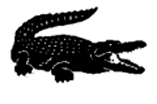 /
/ 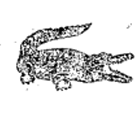 ” , given the striking resemblance to Lacoste’s emblem and their prior use in India. However, the court did not find a case for passing off, as Lacoste failed to prove their reputation in India.
” , given the striking resemblance to Lacoste’s emblem and their prior use in India. However, the court did not find a case for passing off, as Lacoste failed to prove their reputation in India.
Regarding Copyright, the Court was of the opinion that the Crocodile device “ ”, while original, was derived from a generic idea with limited means of expression. Therefore, Crocodile International’s artwork does not violate Lacoste’s copyright, as the foundational idea of crocodile can only be expressed in a limited manner.
”, while original, was derived from a generic idea with limited means of expression. Therefore, Crocodile International’s artwork does not violate Lacoste’s copyright, as the foundational idea of crocodile can only be expressed in a limited manner.
- Issue 4 – Whether the first defendant is the prior adopter and user of the Saurian device and the owner of the trade mark rights in the same ?
Crocodile International has based it defense on the honest adoption and continuous use of the “Crocodile family of marks” since 1947, including their first trademark registration in India dated 12th June 1952. They assert that they have developed various crocodile devices over the decades. Their claim of prior use hinges on this registration and subsequent registrations, including one from November 21, 1990. Crocodile International launched products featuring these marks through their licensee in August 1998, following extensive promotional campaigns since 1995. While they assert the use of the crocodile mark from 1997, they notably did not specifically claim prior adoption of the Annexure-A device before Lacoste, which is significant given their acknowledgment of its use.
Prior Adoption and the use of the mark : Crocodile International has not specifically claimed prior adoption and the use of the standalone saurian device mark. In contrast, Lacoste, has established rights over the standalone crocodile device  , registered in their name in 1983, which predates Crocodile International’s claimed use of the Annexure A device by several years. This demonstrates Lacoste’s prior use and recognition in the Indian market, strengthening their position to allege infringement. While Crocodile International holds prior registration for the composite marks, this does not extend their rights to all variations of the saurian devices, particularly those not included in their registered trademark. Therefore, Lacoste’s registration of the standalone crocodile device not only affirms their trademark rights but also enhances their ability to assert claims of infringement based on prior use and registration.
, registered in their name in 1983, which predates Crocodile International’s claimed use of the Annexure A device by several years. This demonstrates Lacoste’s prior use and recognition in the Indian market, strengthening their position to allege infringement. While Crocodile International holds prior registration for the composite marks, this does not extend their rights to all variations of the saurian devices, particularly those not included in their registered trademark. Therefore, Lacoste’s registration of the standalone crocodile device not only affirms their trademark rights but also enhances their ability to assert claims of infringement based on prior use and registration.
- Issue 5 : Whether the first plaintiff and the first defendant signed and entered into co-existence agreement dated 17th June, 1983 and 22nd August 1985, for the respective authorities and if yes, whether such coexistence extends to India?
Based on the evidence provided, Lacoste and Crocodile International entered into a co-existence agreement in 1983. However, this agreement explicitly limited the parties’ co-existence to the five territories specified in Article 1 of the Agreement (territories include – Taiwan, Singapore, Indonesia, Malaysia (Malaya, Sabah, Sarawak), and Brunei) and does not include India. Therefore, the 1983 Agreement does not entitle Crocodile International to use the trademark in India.
Further with respect to the letter dated 22nd August, 1985, Crocodile International failed to establish that it represented a mutual agreement between the parties allowing the use of the disputed device mark in India. The letter was a unilateral communication, and Lacoste can not be bound by it or precluded from objecting the use of the disputed mark in India.
In conclusion, the parties never executed a co-existence agreement for the disputed trademark and the 1983 agreement and the 1985 letter do not provide Crocodile International with the right to use the disputed device mark in India.
K S&CO Comments
The recent ruling by the Delhi High Court in the Lactose v. Crocodile International case underscores the critical role of intellectual property protection in the fashion industry. With global markets becoming more interconnected, it is imperative for companies to vigilantly protect their trademarks and copyrights to maintain their competitive advantage and avoid consumer confusion. This case highlights the need for businesses to thoroughly evaluate the legal ramifications of their branding choices and to seek expert advice when needed. By upholding intellectual property rights and ensuring a unique brand identity, businesses can create strong and enduring brands.
As Lacoste and Crocodile International move forward, this ruling may establish a benchmark for handling future trademark disputes, especially those involving renowned logos. The court’s message is clear: infringement of well-known trademarks will not be tolerated, regardless of the infringer’s size or reputation. The Delhi High Court’s decision is a notable triumph for the enforcement of intellectual property rights in India. It serves as a crucial reminder for all businesses to respect others’ trademarks and maintain distinct brand identities. As the fashion industry evolves, this ruling will likely influence how companies approach the protection of their intellectual assets.
Conclusion
As IP law continues to adapt to the demands of technology and global business, it becomes evident that robust legal frameworks are essential to safeguard innovation and creativity. From the challenges posed by AI to decriminalization measures aimed at fostering compliance and landmark trademark rulings, these stories highlight the resilience and adaptability of India’s IP landscape. For businesses, creators, and IP professionals, staying informed on these developments is crucial to navigating an increasingly complex environment.



